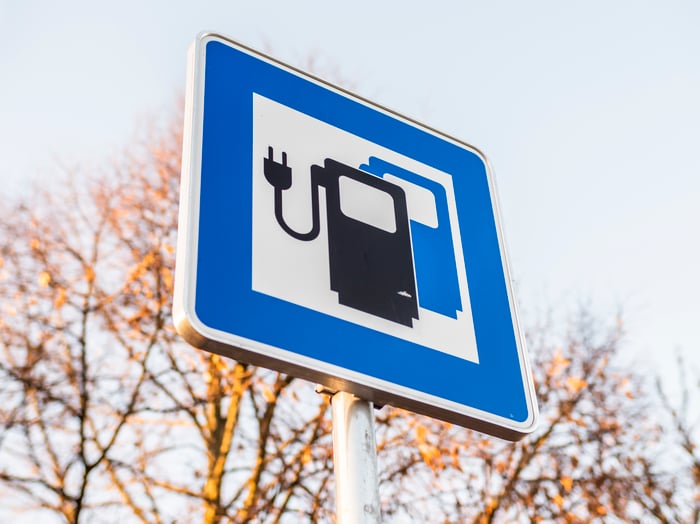Canoo (GOEV -3.75%) was a Wall Street darling not too long ago. But the electric vehicle (EV) maker has fallen out of favor in a big way, with share prices down more than 75% over the past year. That decline, however, makes sense when you step back and look at the company's financial results and its dire need for cash.
Here's why Canoo should probably be a sell for most investors.
Canoo makes no money
Generally, the first thing an investor will want to look at on a company's earnings statement is the so-called "top line." Revenue is what you generate when you sell the things you make. Canoo reported zero revenue in the first half of 2023. It reported no revenue for the full 2022 year and the same top-line result for 2021 as well. Basically, it isn't selling anything at this point.

Image source: Getty Images.
In fairness, the reasons are not all that unusual. Canoo is attempting to build an electric vehicle business from the ground up. But if you don't have revenue, you pretty much can't have earnings, either. Indeed, what Canoo has is a lot of red ink.
If you buy Canoo stock today, you are basically betting that it will be able to build out its business and, eventually, start selling its products. Once it has achieved that, you are then left to hope it can turn a profit ... someday.
There's no way to know if Canoo can get to a profitable point in its existence from here. Thus, only the most aggressive investors should be considering Canoo stock even after the deep stock price decline. There's another thing investors have to worry about as well: the company's balance sheet.
Canoo is diluting current investors
Building a business costs a lot of money. Since Canoo isn't bringing in any cash by selling products, that means it has to find a way to fund its development in some other fashion. That generally means issuing debt and/or selling stock. Issuing debt isn't a great choice because it leads to interest costs, which (broadly speaking) are going up along with rising interest rates. Issuing stock is likely to be far more attractive -- at least for the company.
The cash needs are huge, too. Canoo estimates that it will need to spend between $70 million and $100 million in the second half of 2023. But at the end of Q2, it only had $5 million of cash on its balance sheet. However, management pointed out that: "After giving effect to the issuance and sale of the second and third Yorkville convertible debentures for a total of $53.2 million, and proceeds from the August PIPE of $3 million, our cash balance would have been $61.2 million on June 30, 2023."
Management also just announced that it entered into a convertible preferred stock sale worth $45 million with another company. That agreement could end up raising as much as $150 million in cash over time. These are important steps for Canoo, but investors need to step back and consider the implications.
The convertible securities the company issues are highly likely to be exchanged for (or converted into) shares. And PIPE deals are basically just stock sales. Every new share Canoo issues dilutes current shareholders. That means that each new share that is sold leads to you owning a little less of the company. Canoo is, effectively, hurting current shareholders so it can keep the lights on. That's particularly troubling given the steep stock-price decline since raising cash via stock sales effectively gets more expensive as the stock price drops.
If a company with no revenue wasn't enough to turn you away, then perhaps the ongoing dilution of existing shareholders will be. Again, only the most aggressive investors should be looking at Canoo.
Maybe Canoo makes it, maybe it doesn't
There are no crystal balls on Wall Street, so investors can't really be sure that Canoo can create the business it wants. There's also no surefire way to know that it can't. But what is very clear is that, at this point, Canoo's business is nowhere near where it needs to be to turn a profit. And getting there is going to be costly, with dilutive stock issuance being a key source of funding. That's not a great backstory. Most investors should avoid this high-risk stock.





